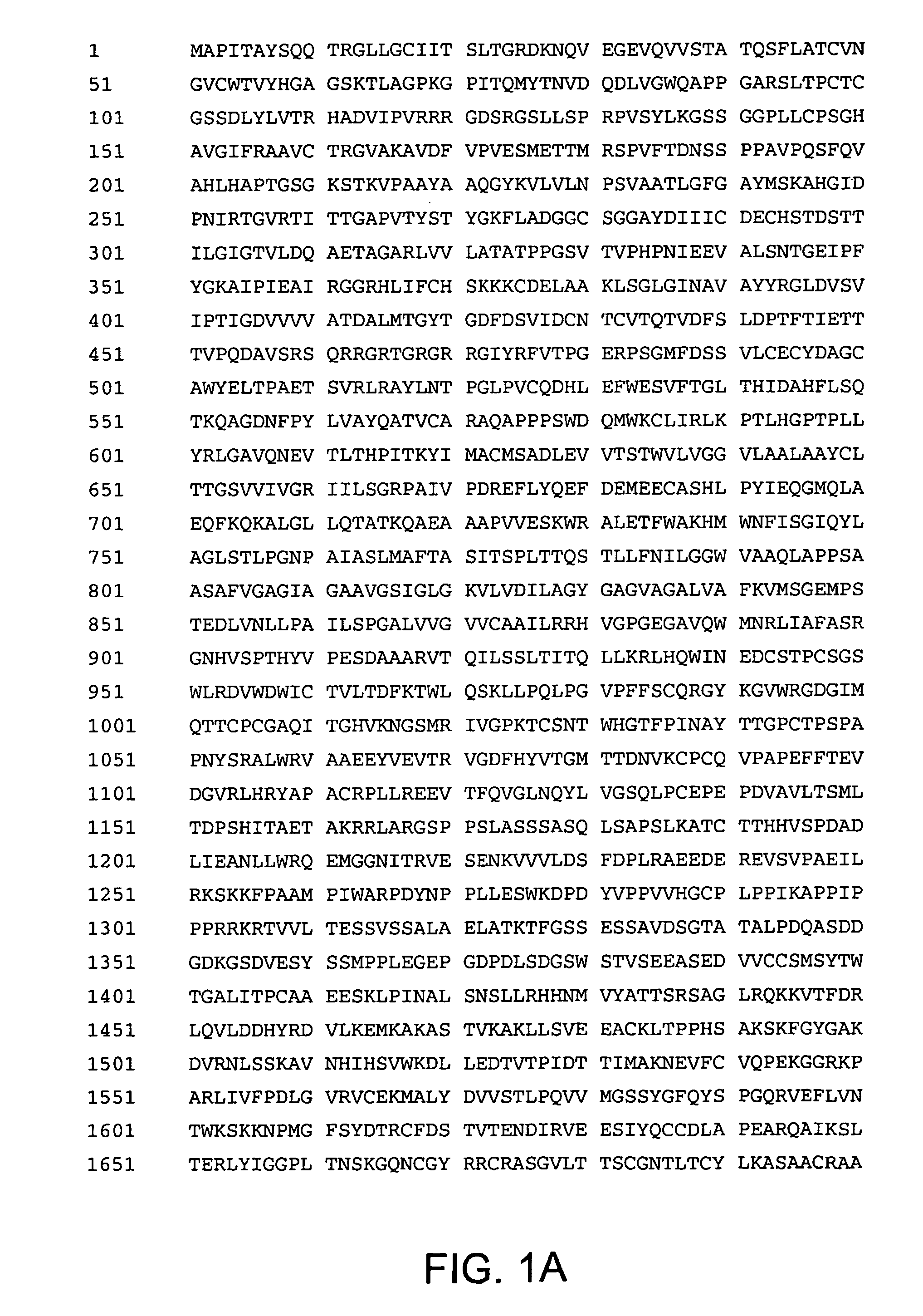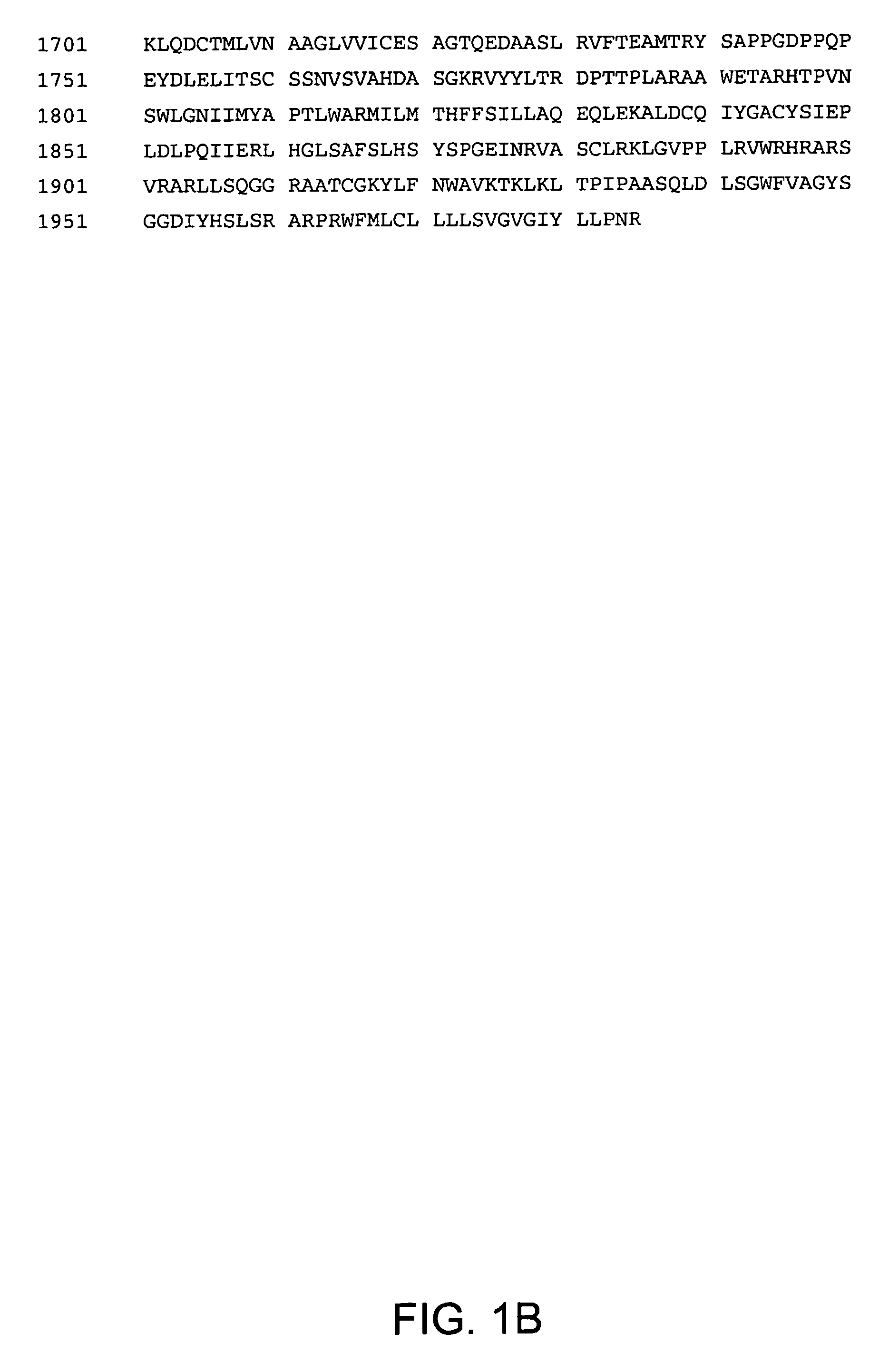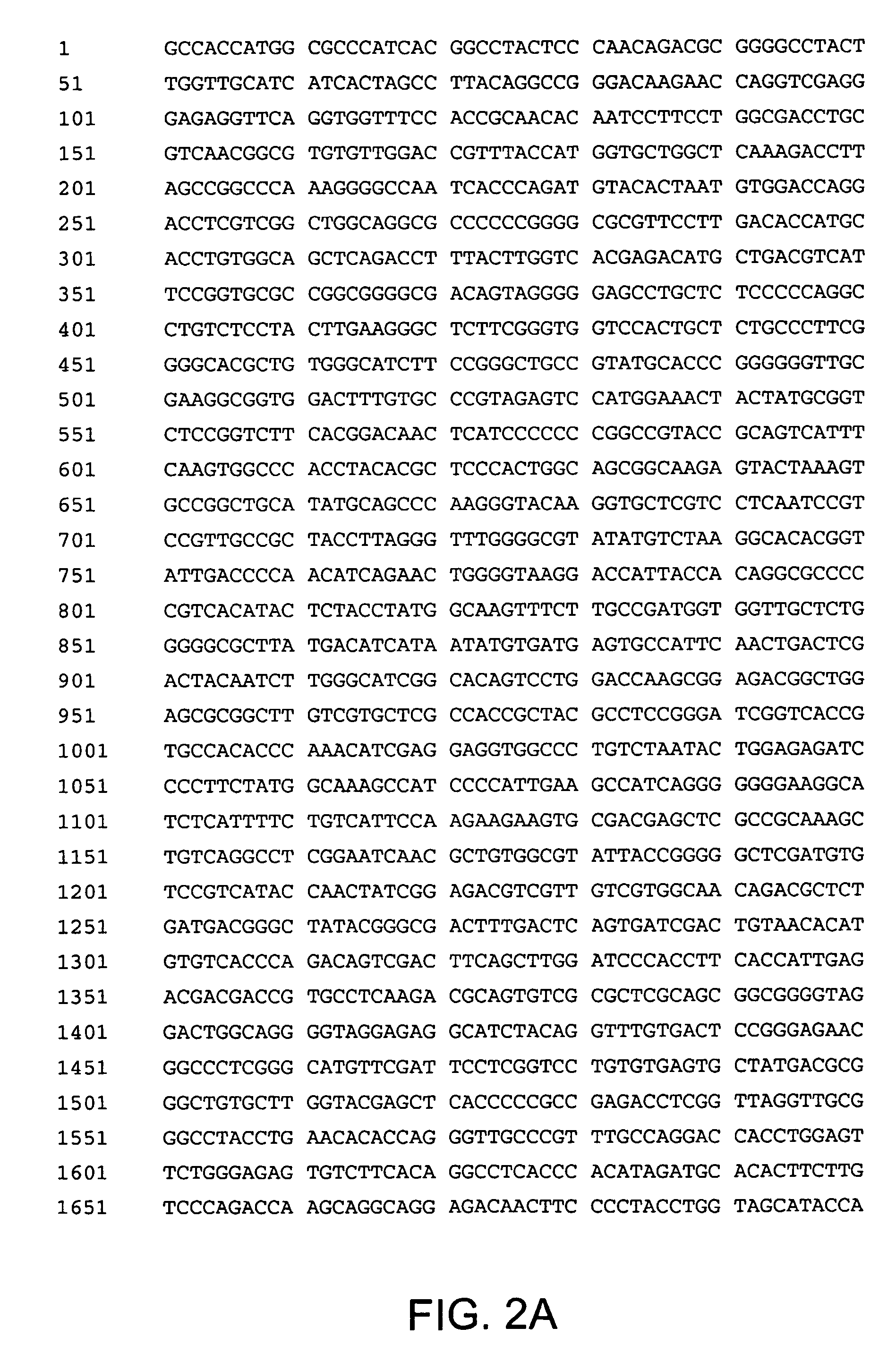Hepatitis C virus vaccine
a technology vaccine, applied in the field of hepatitis c virus vaccine, can solve the problems of protein inclusion, no size limitation of polypeptide, etc., and achieve the effects of reducing the ability of hcv, reducing hcv load, and increasing viral clearan
- Summary
- Abstract
- Description
- Claims
- Application Information
AI Technical Summary
Benefits of technology
Problems solved by technology
Method used
Image
Examples
example 1
Met-NS3-NS4A-NS4B-NS5A-NS5B Expression Cassettes
[0237]Different gene expression cassettes encoding HCV NS3-NS4A-NS4B-NS5A-NS5B were constructed based on a 1b subtype HCV BK strain. The encoded sequences had either (1) an active NS5B sequence (“NS”), (2) an inactive NS5B sequence (“NSmut”), (3) a codon optimized sequence with an inactive NS5B sequence (“NSOPTmut”). The expression cassettes also contained a CMV promoter / enhancer and the BGH polyadenylation signal.
[0238]The NS nucleotide sequence (SEQ. ID. NO. 5) differs from HCV BK strain GenBank accession number M58335 by 30 out of 5952 nucleotides. The NS amino acid sequence (SEQ. ID. NO. 6) differs from the corresponding 1b genotype HCV BK strain by 7 out of 1984 amino acids. To allow for initiation of translation an ATG codon is present at the 5′ end of the NS sequence. A TGA termination sequence is present at the 3′ end of the NS sequence.
[0239]The NSmut nucleotide sequence (SEQ. ID. NO. 2, FIG. 2), is similar to the NS sequence....
example 2
Generation pV1Jns Plasmid with NS, NSmut or NSOPTmut Sequences
[0241]pV1Jns plasmids containing either the NS sequence, NSmut sequence or NSOPTmut sequences were generated and characterised as follows:
pV1Jns Plasmid with the NS Sequence
[0242]The coding region Met-NS3-NS4A-NS4B-NS5A and the coding region Met-NS3-NS4A-NS4B-NS5A-NS5B from a HCV BK type strain (Tomei et al., J. Virol. 67:4017-4026, 1993) were cloned into pcDNA3 plasmid (Invitrogen), generating pcD3-5a and pcD3-5b vectors, respectively. PcD3-5A was digested with Hind III, blunt-ended with Klenow fill-in and subsequently digested with Xba I, to generate a fragment corresponding to the coding region of Met-NS3-NS4A-NS4B-NS5A. The fragment was cloned into pV1Jns-poly, digested with Bgl II blunt-ended with Klenow fill-in and subsequently digested with Xba I, generating pV1JnsNS3-5A.
[0243]pV1Jns-poly is a derivative of pV1JnsA plasmid (Montgomery et al., DNA and Cell Biol. 12:777-783, 1993), modified by insertion of a polylink...
example 3
Mice Immunization with Plasmid DNA Vectors
[0252]The DNA plasmids pV1Jns-NS, pV1Jns-NSmut and pV1Jns-NSOPTmut were injected in different mice strains to evaluate their potential to elicit anti-HCV immune responses. Two different strains (Balb / C and C57Black6, N=9-10) were injected intramuscularly with 25 or 50 μg of DNA followed by electrical pluses. Each animal received two doses at three weeks interval.
[0253]Humoral immune response elicited in C57Black6 mice against the NS3 protein was measured in post dose two sera by ELISA on bacterially expressed NS3 protease domain. Antibodies specific for the tested antigen were detected in animals immunized with all three vectors with geometric mean titers (GMT) ranging from 94000 to 133000 (Tables 1-3).
[0254]
TABLE 1pV1jns-NSMice n.123456789GMTTiter105466891980787993949654354218213932351950286780094553
[0255]
TABLE 2pV1jns-NSmutMice n.11121314151617181920GMTTiter20298155670130786497481767217495844304373377818219369575083
[0256]
TABLE 3pV1jns-NSOP...
PUM
 Login to View More
Login to View More Abstract
Description
Claims
Application Information
 Login to View More
Login to View More - R&D
- Intellectual Property
- Life Sciences
- Materials
- Tech Scout
- Unparalleled Data Quality
- Higher Quality Content
- 60% Fewer Hallucinations
Browse by: Latest US Patents, China's latest patents, Technical Efficacy Thesaurus, Application Domain, Technology Topic, Popular Technical Reports.
© 2025 PatSnap. All rights reserved.Legal|Privacy policy|Modern Slavery Act Transparency Statement|Sitemap|About US| Contact US: help@patsnap.com



